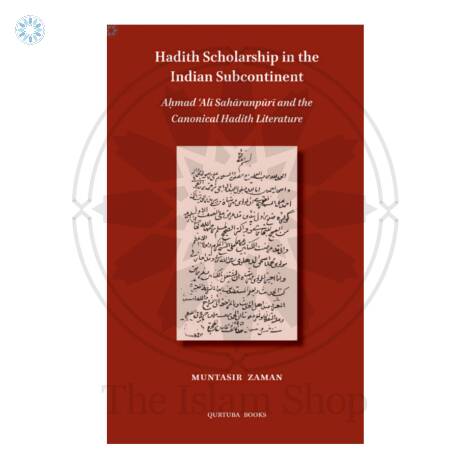Hadith Scholarship in the Indian Subcontinent: Aḥmad ʿAlī Sahāranpūrī and the Canonical Hadith Literature
Hadith Scholarship in the Indian Subcontinent: Aḥmad ʿAlī Sahāranpūrī and the Canonical Hadith Literature
Scholars are indebted to Ahmad Ali Saharanpuri (d1880)for his editorial and commentarial work, particularly of Sahih Bukhari, which he edited and annotated, leaving no room for further work.
Thus said 'Abd al Hayy al Hasani(d.1923), a leading scholar of South Asian Intellectual history. The present monograph traces Saharanpuri's efforts to synthesize traditional knowledge with modern technology. Shortly after the first lithographic printing house was founded in India, Saharanpuri introduced seminal hadith literature to the world of print for the first time thus bridging the gap between Muslim scholarship and the modern age. His efforts in bringing canonical hadith texts to print have benefitted hundreds of thousands of students, yet his legacy is not adequately recognized. The monograph serves to fill this void by providing a comprehensive study of his life, works, and scholarly methodology. To contextualize Saharanpuri's Curriculum vitae, it also surveys the most salient hadith activities in the Indian subcontinent from the early Umayyad conquest until the twentieth century.
A very well researched and informative monograph on the history of hadith scholarship in the Indian subcontinent with particular reference to Shaykh Ahmad Ali Saharanpuri and his editorial and his editorial contributions which include publishing Sahih al Bukhari and Sunan al Tirmidhi with his annotations. Fills an important void, as most people are unaware of his great personality whom we are indebted to. Features a beneficial section on the textual discrepancies in Sunan al Tirmidhi. Worth translating into Rabic and Urdu.
Mufti Shabbir Ahmad, Hadith Lecturer Darul Uloom Blackburn
About The Author
Mufti Muntasir Zaman
Mufti Muntasir Zaman completed his 'Alimiyya studies in Madrasa 'Arabia Islamiyya, South Africa. He then specialised in Islamic Jurisprudence law and hadith. He received an MA in Islamic studies from the Markfield Institute of Higher Education, UK. He is based in Dallas Texas where he teaches advanced hadith and law at Qalam Institute and serves as an Imam in his community.
His publications include a study of the methodology of Sahi Muslim , a guide to Arabic Manuscripts, a translation of Dr Mustafa Azamis introduction to Sahih al - Bukhari, and an examination of hadith scholarship in the subcontinent. His forthcoming monograph examines the conflict between hadith and science. His articles, translations, and book reviews can be found on his website
Reviews
The table of contents of this 60-page booklet is deceptively simple: It lists only chapters, aside from prefaces, bibliographies, and the like. However, any lover of the study of ḥadīth, Islāmic intellectual history, the history of the Indian Subcontinent, or general Muslim bibliophile will find a mesmerizing attraction in the wealth of information Muftī Muntaṣir arranges masterfully, which will help augment one’s knowledge of how and why the texts and study of ḥadīth in the Subcontinent are the way they are and how they have reached us, as well as how they compare to similar efforts exerted in the preparation and proliferation of ḥadīth knowledge and texts in the other lands of Islām, yielding particular insights into this process in the colonial and post-colonial eras and both coping with and thriving in modernity.
For an in-depth review please click here
By Shaykh Ḥamzah wald Maqbūl
Additional Product Information
- ISBN 13: 978-1-9160232-46
- ISBN 10: 1916023246
- ISBN: 9781916023246
- SKU: 9781916023246
- Publishers: Qurtuba Books
- Author: Mufti Muntasir Zaman
- Size: 21 x 16 Cm
- Weight: 135
- Year of Publication: 2021
















